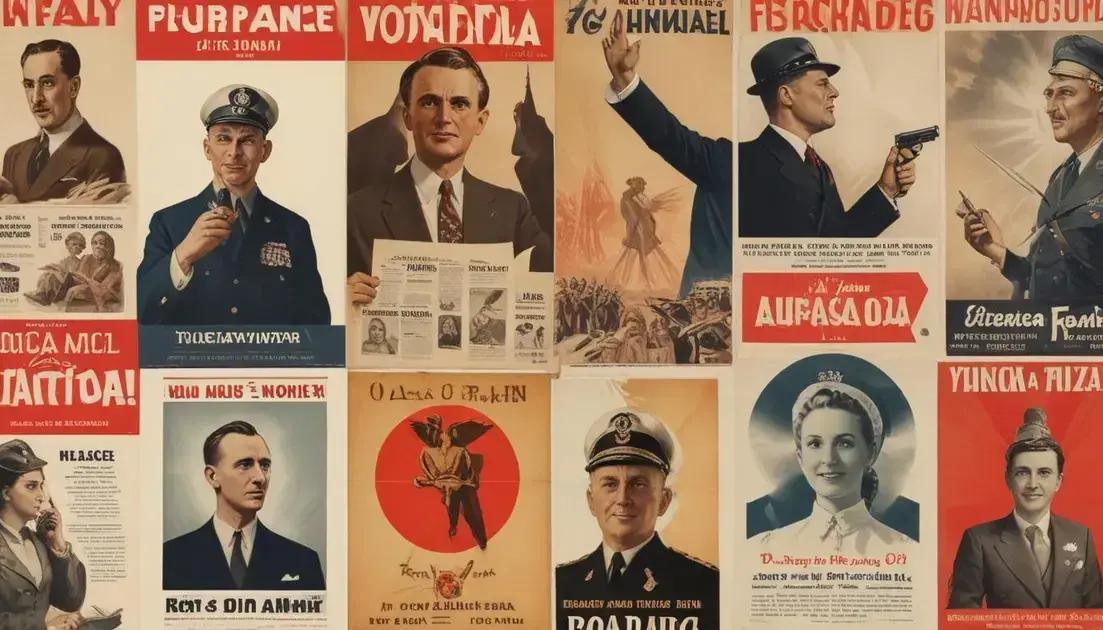
Fear as a tool of power throughout history
Fear serves as a powerful tool throughout history, affecting societies from the Cold War to modern social media. Leaders have historically used fear to manipulate public perception and motivate actions. This impact is notable in propaganda during World Wars and political campaigns today. On social media, fear-driven content spreads quickly, influencing how we process information and react. Understanding fear’s role enables us to navigate its effects better, promoting critical thinking to combat misinformation and maintain a balanced view. This ongoing influence of fear highlights the need for awareness and resilience in our responses.
Fear has played a crucial role in shaping human history, functioning as a powerful tool for manipulation and control. But how exactly has it influenced societies over the decades?
Introduction to Fear and Power
Fear is a strong emotion that can greatly influence our actions and decisions. It has been used for ages as a powerful tool by leaders to control people. Many times, fear motivates us to follow orders or accept ideas, even if we’re not sure they are right.
Historical Examples of Fear as Power
Throughout history, we can see how fear shaped societies. For example, during the Cold War, the fear of nuclear war drove nations to strengthen their defenses. This fear made people more compliant and willing to accept government control.
Fear in Modern Times
Today, fear still plays a big role, especially on social media. People often share scary news, which can spread quickly. This creates a cycle where fear not only captures attention but also influences opinions and reactions.
By examining how fear works, we can better understand its effects. It doesn’t just make us anxious; it also pushes us toward action. Recognizing this can help us think critically about the information we consume every day.
Can Fear Be Positive?
Interestingly, fear isn’t always bad. It can alert us to danger and keep us safe. Understanding this dual nature of fear is essential. It lets us harness fear for positive change instead of manipulation.
Historical Examples of Fear as Propaganda
Fear has been used as a tool throughout history. It often shapes how people think and act. Leaders have manipulated fear to gain control over populations. This tactic can be seen in various historical events.
World War I and II
During both World Wars, propaganda was common. Governments spread fear to rally support. They painted enemies as dangerous threats. This helped justify military actions and conscription.
The Cold War Era
In the Cold War, fear intensified between the U.S. and the Soviet Union. Governments used fear of communism to unite citizens. People worried about nuclear attacks, allowing governments to justify surveillance and control.
Modern Political Campaigns
Even today, fear is used in elections. Politicians might highlight threats to gain votes. Scare tactics can sway public opinion and distract from real issues. This shows how fear remains effective.
Recognizing these patterns can help us understand today’s political landscape. Fear can easily manipulate public sentiment and influence decisions. Being aware is crucial in navigating such influences.
Impact of Fear on Social Media
Fear plays a huge role in how we use social media. It affects what we share, like, and comment on. When people see alarming news, they often react quickly. This can lead to mass sharing, which amplifies the fear.
The Viral Nature of Scary Content
Social media spreads content faster than ever. Scary stories or images can go viral in minutes. This viral nature can manipulate public perceptions. People often believe what they see without checking facts.
Emotional Engagement
Fearful posts grab attention. They spark strong emotions, making people want to engage. This engagement can lead to more likes and shares, creating a cycle. As more users engage, the posts reach a larger audience.
Challenges of Misinformation
Sometimes, fear-based content is false or exaggerated. Misinformation can spread just as easily as the truth. This can create panic and confusion among users. People may make decisions based on false information, leading to real-world consequences.
Recognizing the impact of fear on social media is key. Being cautious about what we believe and share helps us fight misinformation. Critical thinking is essential in this fast-paced environment.
Conclusion: The Ongoing Influence of Fear
Fear continues to shape our world in many ways. It influences how we view news and interact online. In today’s society, fear can drive decisions and behaviors.
Fear in Everyday Life
People often react to fear in everyday situations. Whether it’s about safety or health, fear can motivate action. This response is natural, but it can also be overwhelming.
The Role of Education
Understanding the nature of fear is important. Education can help people see through fear-based messages. When we learn critical thinking skills, we can better navigate a fearful landscape.
Finding Balance
While fear can be a tool for protection, it should be balanced. Too much fear can lead to stress and anxiety. Learning to manage these feelings is key for our well-being.
In conclusion, fear will always be a part of our lives. Recognizing its influence helps us respond wisely. A healthy perspective on fear can empower us to face challenges head-on.
Conclusion
In conclusion, fear will always play a significant role in our lives. It can influence how we think, act, and interact with others. Understanding fear helps us respond better to its impacts, both personally and in our communities.
By educating ourselves and developing critical thinking skills, we can see beyond fear-based messages. This awareness allows us to make informed decisions without being overwhelmed by anxiety.
Finding a balance is essential. While fear can motivate us to protect ourselves, too much fear can create stress. By learning to manage our feelings about fear, we can empower ourselves and those around us.
Ultimately, recognizing the ongoing influence of fear can help us face life’s challenges with courage and resilience. Together, we can create a supportive environment that lessens the grip of fear in our lives.


